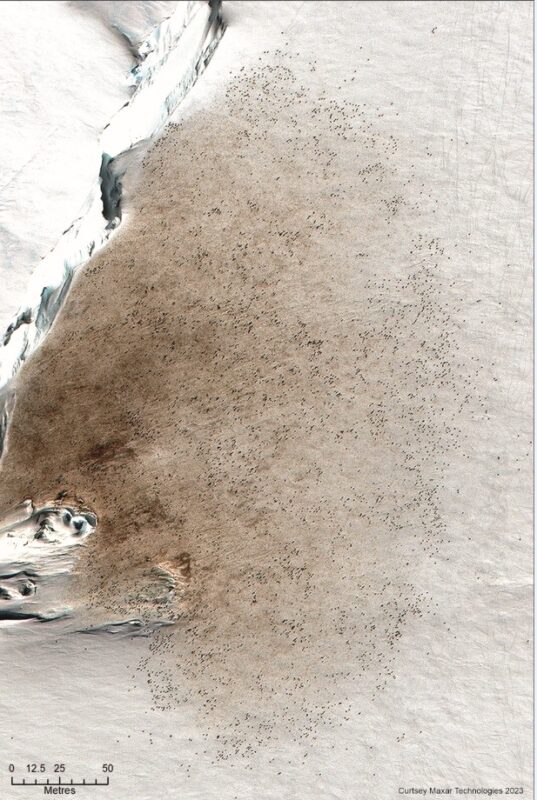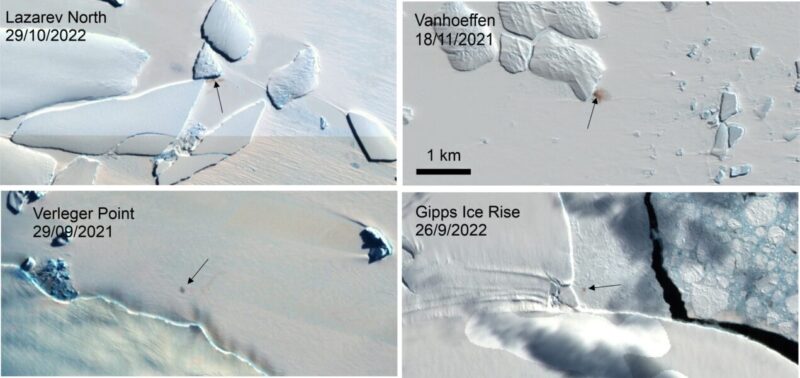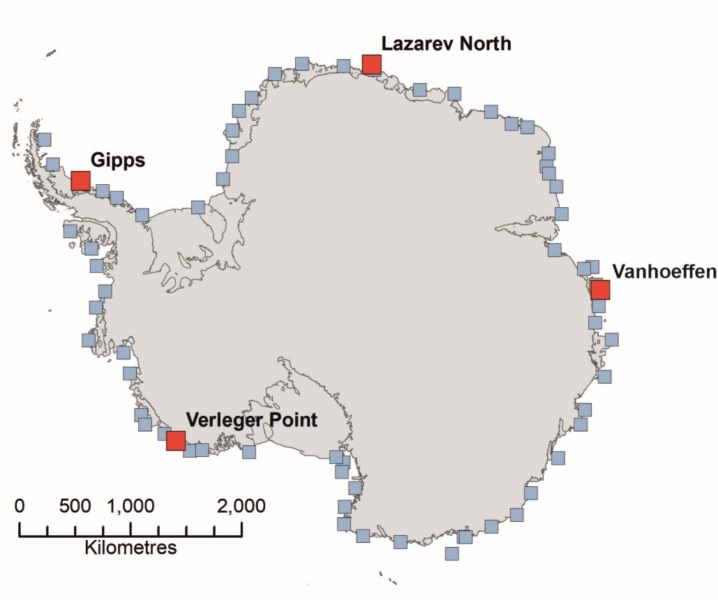Poop stains led to surprising penguin discovery
Unstable sea ice in Antarctica has some emperor penguins on the move. Several colonies have already moved some 25 miles (40 km) in search of stable breeding grounds. On January 24, 2024, the British Antarctic Survey said scientists using satellite imagery to search for the new breeding grounds were surprised to find four previously undiscovered colonies. How did they find these colonies? By seeing the penguins’ brown poop stains in the white snow.
Besides the four new colonies, the scientists also rediscovered a colony they thought had vanished. The Brunt Ice Shelf calving disrupted a group of emperor penguins that the researchers called the Halley Bay colony. And now they’ve relocated this colony 18 miles (30 km) east near the MacDonald Ice Rumples. So, this rediscovery plus the four new discoveries make 66 known emperor penguin colonies.
The scientists published their discovery in the peer-reviewed journal Antarctic Science on January 20, 2024.

Emperor penguin colonies in Antarctica
Emperor penguins make their colonies all around the edges of the Antarctic continent. Penguins breed and raise their chicks on floating ice connected to land. These are not easy areas for humans to access, so scientists monitor the penguins with the help of satellite images. Antarctica is a white, frozen world, and the penguins’ brown poop makes a noticeable contrast to the icy landscape. So the patches of brown reveal the penguins’ presence.
The researchers used satellite images from the Copernicus Sentinel-2 and Maxar WorldView-3 satellites.

But all is not well in Antarctica
While it may feel encouraging to discover more emperor penguins in Antarctica, the situation is not positive. The loss of sea ice has been catastrophic on the penguins. In 2022, the sea ice broke up under some of the colonies while the chicks were too young to survive, drowning up to 10,000 babies.
Peter Fretwell of the British Antarctic Survey said:
These newly identified locations fill in almost all the gaps in the known distribution of these iconic birds. All except one of these colonies are small with less than 1,000 birds, so finding these new colonies makes little difference to the overall population size. In fact, it is overshadowed by the recently reported breeding failures due to the early and fast ice loss.
So while emperor penguins can respond to the sea ice loss by moving to more stable breeding grounds, the report said:
However, this strategy doesn’t work if sea ice is affected across an entire region.

Bottom line: Scientists used satellite images to find brown poop stains that led to a surprise discovery of four emperor penguin colonies. But all is not well in Antarctica.
Source: Four unreported emperor penguin colonies discovered by satellite
Read more:
Antarctic ice on the run, with a 45-year low
Emperor penguins added to ‘threatened’ list
Emperor penguins: A report from the Antarctic












